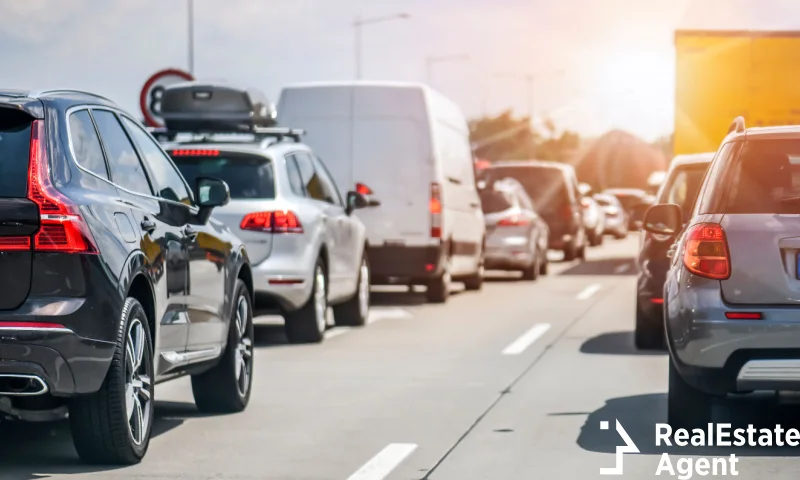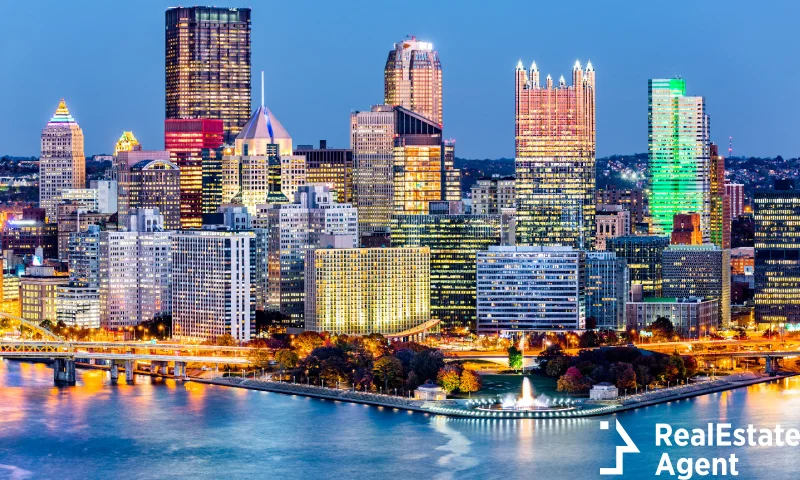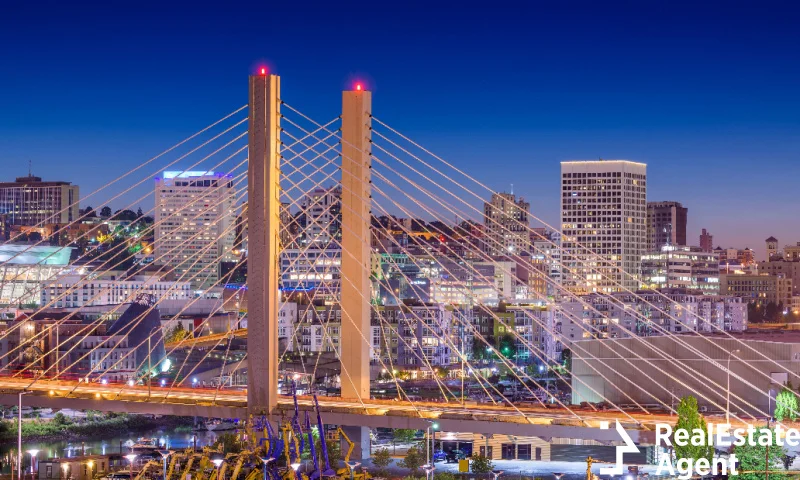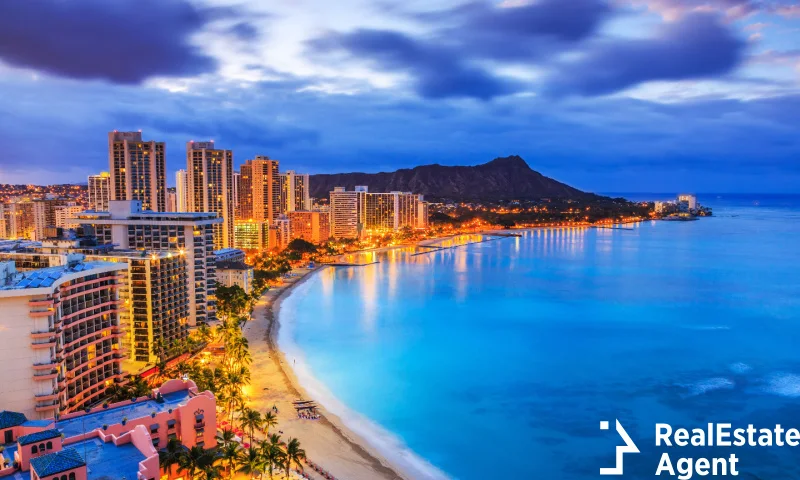Unsurprisingly, the USA is home to some of the most congested cities in the world. We often find ourselves behind the wheel, cruising through the hustle and bustle of our nation’s roadways. Yet, for some unlucky commuters, the daily drive is not just a routine – it’s a battle against time, patience, and the infamous congestion that plagues our urban landscape. Still, experts state that high traffic indicates a thriving economy because more people are going out and are more likely to spend money. Today, we get into the heart of the matter, shedding light on the top 5 U.S. cities with the worst traffic.
Picture yourself in New York, where the term “gridlock” feels like an understatement as you inch along the freeway, surrounded by a sea of brake lights. Or perhaps you’re stuck in the perpetual crawl of Washington, D.C., where every street seems to converge into a chaotic dance of honking horns and frustrated sighs.
However, the struggle is not exclusive to these metropolitan areas alone. From the sprawling highways of Boston to the winding streets of San Francisco, U.S. cities with the worst traffic present a common challenge for commuters nationwide.
Join us as we explore the factors contributing to this traffic turmoil, from population density and inadequate infrastructure to the rise of ride-sharing services and the ever-elusive quest for efficient public transportation. Let’s discover the Top 5 U.S. cities with the worst traffic.
Summary:
1. New York City, NY
New York City is known for many things: towering skyscrapers, Broadway shows, and, yes, its infamous traffic jams. You’re not alone if you’ve ever been stuck in a sea of honking horns and bumper-to-bumper cars. According to a recent report by TomTom, a geolocation technology specialist, New York City takes the crown for having the worst traffic in America. But why is it so bad?
Well, picture this: over 8 million people crammed into a relatively small space, all trying to get from point A to point B. It’s like squeezing a gallon of milk into a pint-sized container – things are bound to get messy. With so many people relying on cars, taxis, and buses to get around, the streets are constantly clogged with traffic.
And let’s not forget about the layout of the city itself. New York’s streets were laid out long before cars were even a thing, which means they’re narrow and winding, with limited room to maneuver. It’s like trying to navigate a maze, except the walls are made of buildings, and the prize at the end is a parking spot.
Then there’s the subway system – a lifeline for many New Yorkers but also a source of frustration when it’s delayed or overcrowded. When the trains are packed like sardines, more people turn to driving, adding to the road congestion.
As if all that weren’t enough, there’s constant construction happening all over the city. Whether it’s fixing potholes, repaving streets, or building real estate in New York City, there’s always something going on. And with construction come road closures, detours, and lane restrictions, making an already bad situation even worse.
But perhaps the most frustrating thing about New York City traffic is the time it steals from us. According to the TomTom report, drivers lose an average of 8 minutes and 2 seconds for a six-mile trip due to traffic delays.
That precious time could be spent doing something else – catching up on emails, listening to a podcast, or just enjoying the view. Real estate agents in New York can provide you with information about the less congested areas if you want to take the leap and move to a quieter region of this beautiful city.
2. Washington D.C.
The city of Washington, D.C., famous for its history and politics, has a not-so-great claim to fame: it’s the second worst city in the U.S. for traffic jams. Imagine this: if you’re driving just six miles in D.C., it takes you an average of 21 minutes and 20 seconds. That’s a lot of time staring at brake lights!
In 2023, people commuting in D.C. wasted 86 hours stuck in traffic. That’s like watching almost four seasons of your favorite show just sitting in your car! And if you’re making a short six-mile trip, you’re losing about 5 minutes and 37 seconds because of traffic. Crazy, right?
So, why is D.C. such a traffic nightmare? Well, it’s a mix of things. The city’s design is complicated, with many buildings, streets, and highways all crammed together. Plus, you’ve got tourists, government workers, and regular folks trying to get somewhere simultaneously. It’s like a big traffic party that nobody wants to attend!
Even though people have tried to fix it by adding more buses and repairing roads, the problem persists. Too many people are trying to get around, and not enough space to do it smoothly.
What’s interesting is that while D.C. deals with all this traffic chaos, it’s also home to important organizations like the Red Cross and National Geographic. These groups bring many people into the city daily, adding even more cars.
3. San Francisco, CA
Based on the same study, San Francisco is third on our list. Regarding U.S. cities with the worst traffic, the Golden Gate City certainly lives up to its reputation. Anyone who’s navigated its streets during rush hour knows the frustration of inching along at a snail’s pace, surrounded by a sea of brake lights.
San Francisco’s unique geography, with its hilly terrain and limited space, presents a challenge for urban planners and commuters alike. Add to that the booming tech industry, which has brought an influx of workers and residents to the area, and you have a recipe for gridlock.
One of the main contributors to San Francisco’s traffic woes is its reliance on cars. Public transportation options like BART and Muni certainly help, but they can only do so much in a city where car ownership is still the norm for many residents. With limited parking and congested streets, driving in San Francisco can feel like an exercise in patience.
But it’s not just the volume of cars that clogs the roads; it’s also the infrastructure. Many of San Francisco’s streets were designed long before the advent of vehicles, leading to narrow lanes and confusing intersections. Add in ongoing construction projects and frequent road closures, and you have a recipe for traffic nightmares.
Efforts to alleviate congestion in San Francisco are ongoing, with initiatives like bike lanes, pedestrian-friendly streets, and congestion pricing schemes all being explored. But with so many factors at play, finding a solution won’t be easy.
4. Boston, MA
In the landscape of U.S. cities with the worst traffic, Boston often finds itself in the unenviable position near the top of the list. The bustling metropolis, known for its historic charm and vibrant culture, is notorious for its gridlocked streets and snarling highways.
When commuting in Boston, residents and visitors must brace for lengthy delays and bumper-to-bumper traffic. The city’s narrow, winding streets, initially designed for horse-drawn carriages, struggle to accommodate the modern influx of cars, trucks, and buses.
According to recent studies on U.S. cities with the worst traffic, Boston ranks fourth, trailing closely behind urban giants like New York City, Washington D.C., and San Francisco. The daily grind of congestion tests commuters’ patience and takes a toll on productivity and quality of life.
For those navigating Boston’s streets, rush hour can feel like an endless ordeal, with travel times doubling or even tripling during peak periods.
Major arteries such as the Massachusetts Turnpike and the infamous I-93 often resemble parking lots during rush hour, leaving commuters stranded in a sea of brake lights.
The root causes of Boston’s traffic woes are manifold. A booming economy and population growth have increased demand for transportation services, exacerbating congestion on strained roadways. Additionally, ongoing construction projects and infrastructure repairs further compound the problem, creating bottlenecks and detours that disrupt traffic flow.
Real estate agents in Boston, MA, are acutely aware of the impact of traffic congestion on property values and desirability. Prospective homebuyers often weigh commute times and accessibility when considering a new residence, making proximity to public transportation hubs a coveted feature in the local housing market.
5. Chicago, IL
Regarding U.S. cities with the worst traffic, Chicago consistently ranks at the top. From Lake Shore Drive to the infamous Kennedy Expressway, commuters in the Windy City know the struggle of navigating the congestion all too well.
Chicago’s status as the fifth city with the worst traffic in the U.S. isn’t just a statistic; it’s a daily reality for millions of residents and visitors alike. The reasons behind the gridlock are as varied as the neighborhoods that make up this vibrant metropolis.
Real estate agents in Chicago, IL, say that one major factor contributing to the city’s traffic nightmare is its size and population density.
With over 2.7 million residents in the city and millions more in the surrounding metropolitan area, the demand for transportation infrastructure is immense. Despite efforts to expand highways and improve public transit, the growing population strains existing systems.
The layout of Chicago’s streets and highways also significantly contributes to congestion. While the city’s grid system is efficient for navigation, it can become a nightmare during rush hour as cars, buses, and trucks jostle for space on narrow streets and overburdened highways. Add to that mix the unpredictable weather patterns that often plague the region, and you have a recipe for traffic chaos.
Another contributing factor to Chicago’s traffic woes is its reliance on automobiles as the primary mode of transportation. While the city boasts an extensive public transit network, including buses and trains operated by the Chicago Transit Authority (CTA), many residents still prefer the convenience and flexibility of driving their vehicles. This preference increases traffic volume on congested roads, especially during peak commuting hours.
Final thoughts
In wrapping up our exploration of the top 5 U.S. cities with the worst traffic, one thing is clear: the struggle against congestion is something many of us can relate to, no matter where we live.
From the hustle of New York City to the winding roads of San Francisco, each city’s traffic nightmare is a shared experience that impacts our daily lives.
But beyond the frustration of being stuck in bumper-to-bumper traffic, there’s a sense of unity in facing this challenge together. It’s a reminder that we’re all in this together, navigating the same congested streets and crowded highways.
As someone who has been part of RealEstateAgent.com, a company connecting real estate agents with buyers and sellers for over 20 years, I have had the privilege of working closely with agents across the U.S.
Through these interactions, I have gained deep insights into how traffic issues influence the real estate market and our everyday lives. I’ve heard countless stories from agents and clients about the impact of traffic on their daily routines and how it shapes their decisions about where to live and work.
From witnessing cities’ rapid growth to understanding urban planning’s complexities, I’ve seen firsthand how population density and outdated infrastructure contribute to these traffic woes. Personally, I’ve felt the frustration of sitting in traffic during rush hour and the stress it brings. However, I’ve also seen the hope and determination in our collective effort to find solutions.













